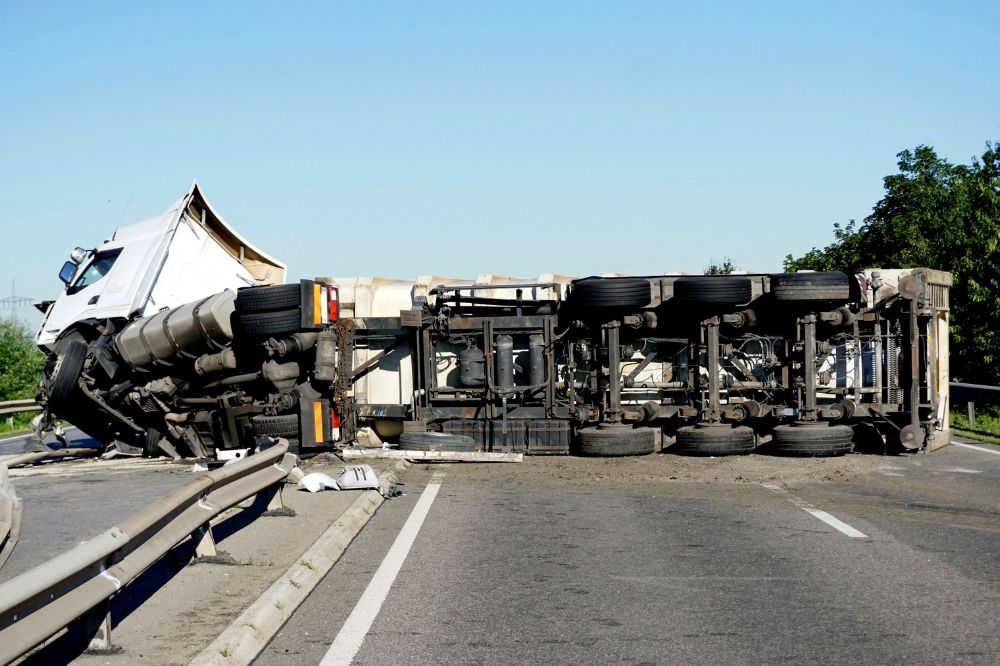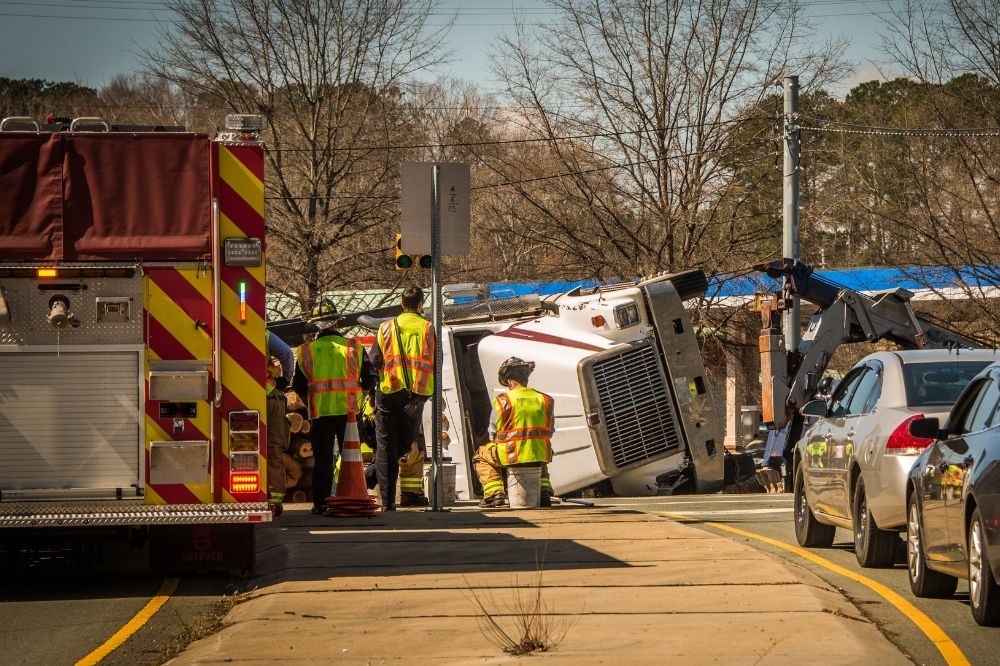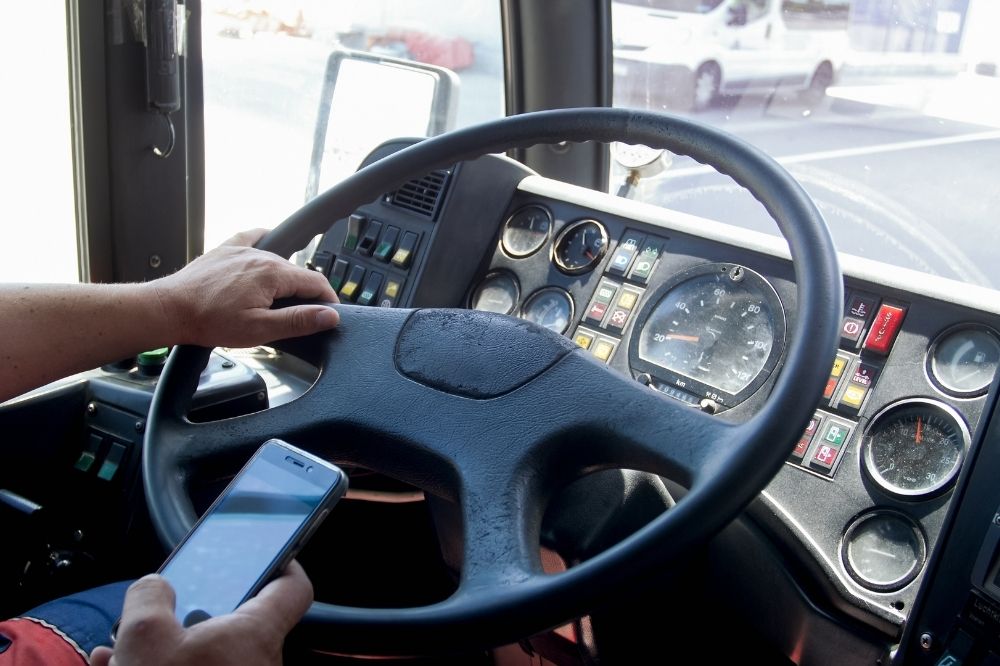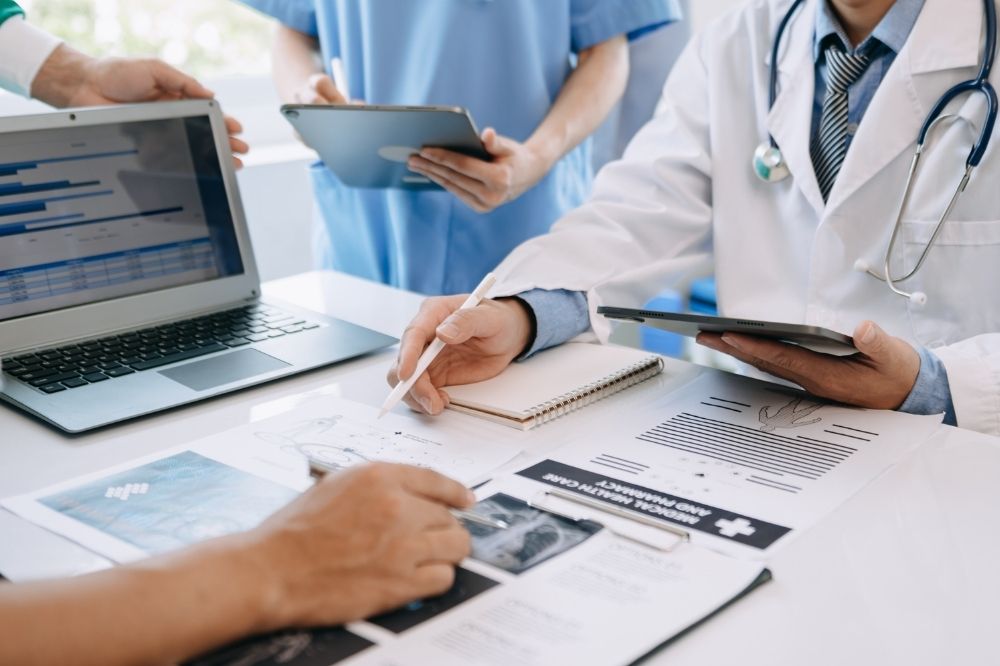
Being involved in a commercial vehicle accident can be overwhelming, but understanding the commercial vehicle accident procedure can make a significant difference in your recovery. Your actions immediately after the accident impact your safety, medical care, and legal rights.
Following the right steps ensures you receive timely medical attention and protects your claim for financial and non-financial damages.
Below, we outline everything you need to do after a commercial vehicle accident to help you secure maximum compensation and navigate the aftermath smoothly.
Key Differences Between Commercial Vehicle Accidents and Standard Auto Accidents
Before we discuss the commercial vehicle accident procedure, it’s important to understand how these accidents differ from regular auto collisions.
First, commercial vehicle accidents tend to be more severe than a car accident because of the size and weight of the vehicles, leading to greater injuries, damages, and a more complex compensation process.
Second, commercial vehicles are subject to stricter federal and state regulations, such as the Federal Motor Carrier Administration (FMCSA) insurance requirements, which raises the legal and financial stakes.
Immediate Steps to Take After a Commercial Vehicle Accident
Depending on how severe the accident is and whether you’ve sustained any serious injuries, here are the most important immediate steps you must take after a commercial vehicle accident to compile a comprehensive preliminary accident report:
Ensuring Safety and Calling for Help
- Prioritize Safety: If the accident is minor and your vehicle is drivable, move to a safe roadside spot to prevent further collisions. If there are serious injuries or significant damage, leave the vehicles in place and use reflective triangles or flares to alert other drivers. Avoid moving injured individuals unless there’s immediate danger, such as fire or water.
- Call Emergency Services: If you’re involved in an accident, always report it to the police, even if it seems minor. A police report is crucial for insurance claims. Seek medical assistance from a medical professional, even if you feel fine, to rule out hidden injuries.

Gathering Information from Involved Parties
Be keen to exchange contact information and other relevant details with all parties involved in the accident. These include:
- Contact Information: Collect names, phone numbers, and addresses of drivers, passengers, and any other involved parties.
- Insurance Information: Obtain the insurance provider name and policy number from all drivers.
- Vehicle Details: Record the make, model, year, and color of each vehicle involved.
- Driver’s License Number: Note the license number and issuing state of all drivers.
- License Plate Numbers: Document the plate numbers of all vehicles to help with claim verification.
- Witness Information: Get the names and contact details of any witnesses, as their statements may be crucial in determining fault.
Documenting the Scene of the Accident
Once you exchange information, try to capture the accident scene by noting as many details as possible, including:
- Date and Time: Note the exact date and time of the accident, as this can help establish conditions and responsibilities.
- Location: Identify the road, highway, or intersection where the accident occurred. If possible, include GPS coordinates.
- Road Conditions: Describe any hazards, such as potholes, debris, or slick surfaces, that may have contributed to the crash.
- Weather and Lighting: Record factors like rain, fog, snow, or poor visibility, as these can influence liability.
- Traffic Signs and Mile Markers: Identify nearby signs, signals, or mile markers to provide context for the accident’s location.
- Photos and Videos: Capture clear images of vehicle damage, skid marks, traffic signals, injuries, and any surrounding property damage for evidence.

Understanding Relevant Laws and Regulations
Commercial vehicles like semi-trucks and tractor-trailers must meet stricter safety standards than regular vehicles. Knowing key federal and state regulations can help you take the right steps after an accident. Important rules to be aware of include:
Federal Regulations for Commercial Vehicles
- FMCSA provides specific hours of service regulations to enhance truck driver safety and the safety of other drivers.
- Trucking companies and their drivers must follow strict vehicle maintenance and inspection regulations. An accident resulting from improper vehicle maintenance means you can build a solid case and pursue compensation from several parties.
State-Specific Laws Impacting Accidents
State laws impact your ability to seek compensation after a truck accident, particularly comparative vs. contributory negligence rules.
- Comparative negligence states (e.g., Indiana) allow the fault to be shared. Your compensation is reduced by your percentage of fault. If awarded $100,000 but 20% at fault, you receive $80,000.
- Contributory negligence states bar compensation if you’re even slightly at fault. A 2% fault means you get nothing.
Given these complexities, consulting a legal expert ensures you file your claim correctly. Here’s a quick guide to navigating semi-truck accident claims.
Common Causes of Commercial Vehicle Accidents
Some of the major causes of commercial vehicle accidents include:
Driver Fatigue and Its Impact
Irregular sleep schedules, driving for long hours, and pressure to meet tight delivery schedules can lead to severe driver exhaustion. Exhaustion slows down the trucker’s reaction times, impairs their decision-making abilities, and might cause them to sleep behind the wheel, leading to accidents.
Poor Vehicle Maintenance and Inspections
Poor vehicle maintenance often leads to mechanical issues and other vehicle malfunctions, such as brake failures, steering malfunctions, and tire blowouts. These can cause severe accidents, especially if your vehicle breaks down unexpectedly in heavy traffic or highways.

Distracted Driving and Other Human Factors
Common driving distractions, such as mobile phone use, eating while driving, or other distractions, divide a trucker’s attention from the road. Inattention, even for a split second, increases the likelihood of causing an accident.
The Investigation Process After an Accident
Building a strong case that’ll help you get the compensation you deserve after a commercial motor vehicle accident involves performing a thorough investigation in line with the correct truck driver accident procedures. Usually, your legal representative will have to contact different parties who play different roles throughout their investigations. A few of these include:
Role of Law Enforcement
The contribution of law enforcement agents toward the entire legal process begins at the accident scene. Because they’re among the first to get to the scene, the information they gather in their police report is one of the most reliable pieces of evidence you need to build your case.
Involvement of Insurance Companies
Insurance companies often send representatives to assess the accident scene and evaluate coverage. In many cases, insurance adjusters may try to persuade you to accept a lower settlement than you deserve. To protect your right to full compensation in a personal injury lawsuit, avoid speaking with them at the scene or afterward. Instead, let your lawyer handle all communications.
Evaluating Witness Statements
Witness statements play a crucial role in reconstructing events of the accident. Accident reconstruction is an indispensable step, if you want to achieve a favorable outcome in your claim. Reviewing credible witness accounts also helps your legal team uncover additional valuable info that can support your position.
Collecting Documentation and Evidence
Another significant aspect of creating a solid case that earns you maximum compensation is collecting relevant documentation and evidence, including the following:
Gathering Photos and Videos
Visual evidence enhances the credibility of your account and the witnesses’ accounts of what happened. They provide a tangible, undeniable representation of the accident, including the actual positions of vehicles involved, road conditions, damage to property, and other potential contributing factors.

Securing Medical Records and Reports
Obtaining hospital records for injuries sustained in the accident helps determine the compensation amount you deserve. They provide proof of all the types of injuries, psychological effects, and trauma suffered as a result of the accident. It may be physical injuries, such as broken bones and head trauma, or long-term emotional effects, like PTSD or anxiety.
Keeping Records of Communication
Keeping records of all communication with relevant parties proves that you followed the required legal process to build your case. These records include logging emails, calls, and other correspondence with insurance or legal entities.
Understanding Legal Liability
As mentioned earlier, multiple parties can be liable for the injuries and damages caused by a commercial vehicle accident. Depending on the results of your investigations, you can seek compensation for medical expenses and other non-physical damages from the following potential liable parties:
- Vehicle manufacturers or parts suppliers
- Fleet owner or trucking company
- Truck driver
- Maintenance contractors
- Cargo loading companies
- Government entities
Conclusion
Accidents can be overwhelming, leaving you unsure of what to do next. This guide aims to clarify post-accident procedures, helping you gather essential facts while protecting your right to compensation.
The key is to stay calm and work with an experienced commercial vehicle accident lawyer. The right attorney will help you maximize your compensation and recover quickly. Check out our guide on finding the best legal team for your case.
If you need a new or used commercial vehicle after an accident, we’re here to help. We offer tailored commercial vehicle truck loans to finance repairs or replacements, getting you back on the road fast.


